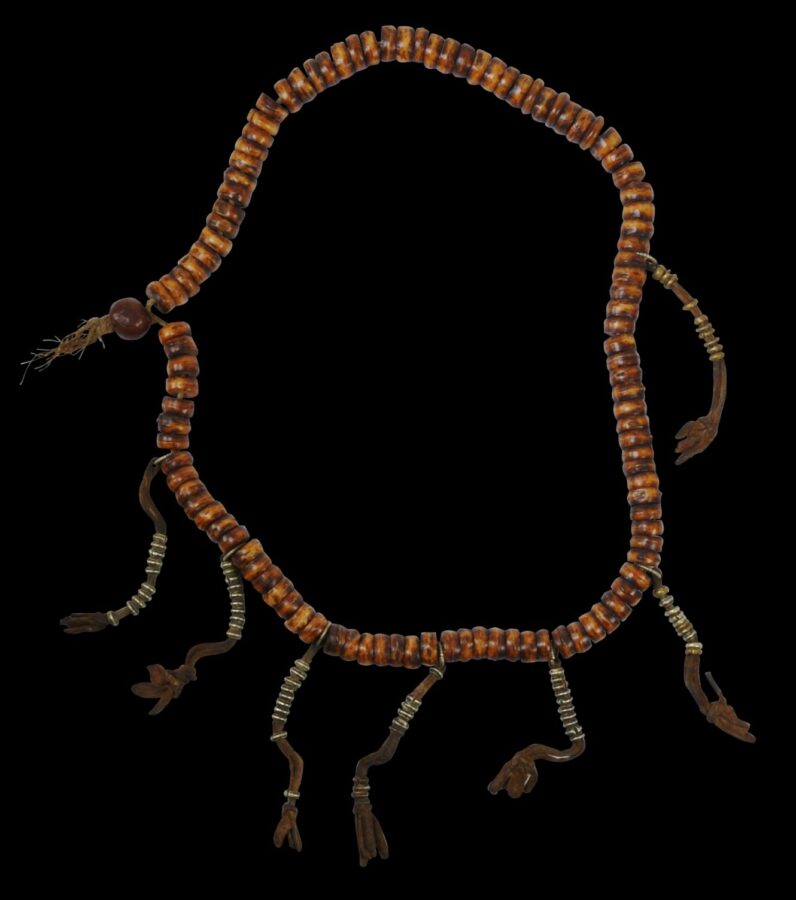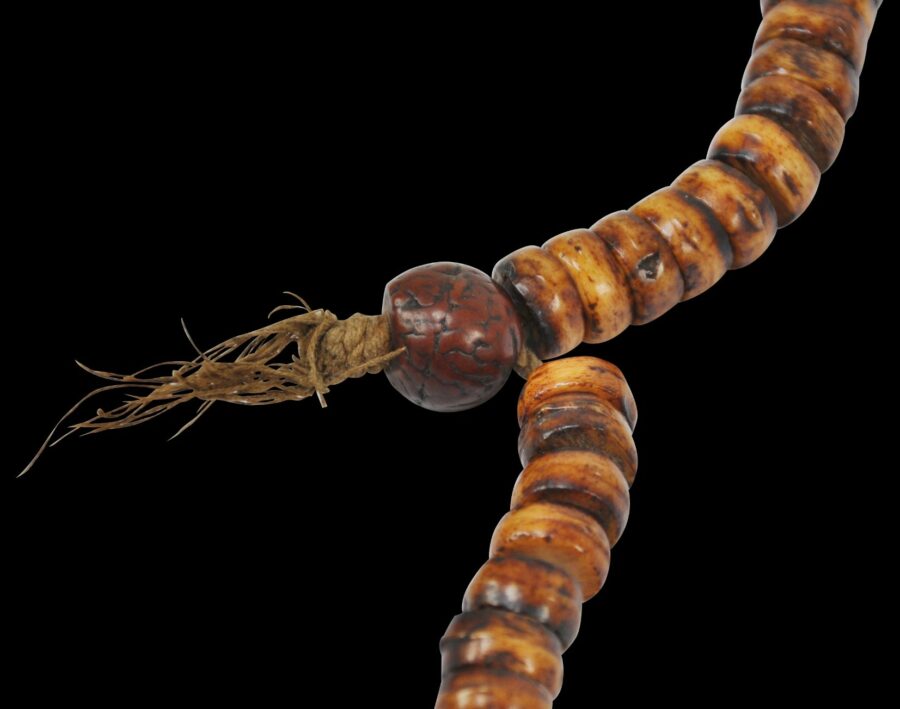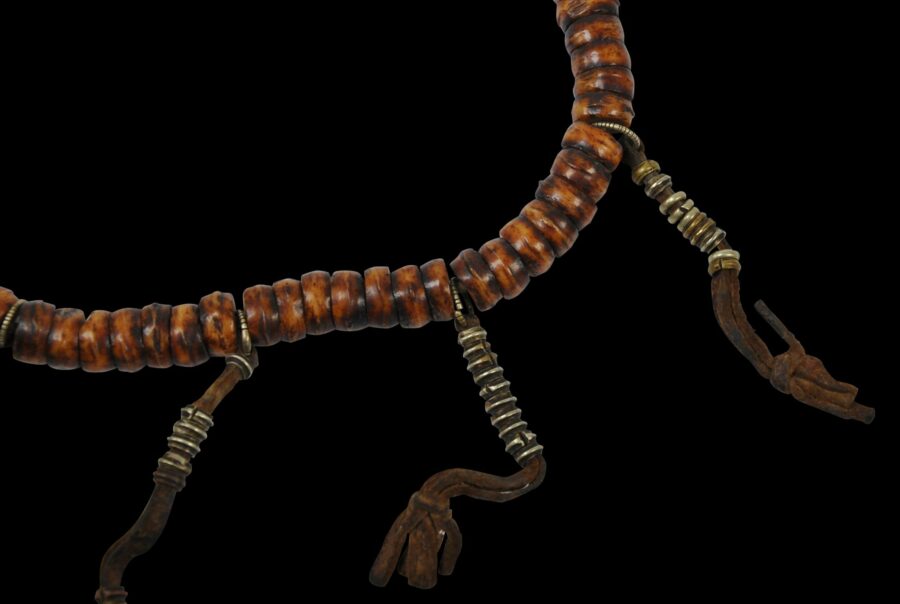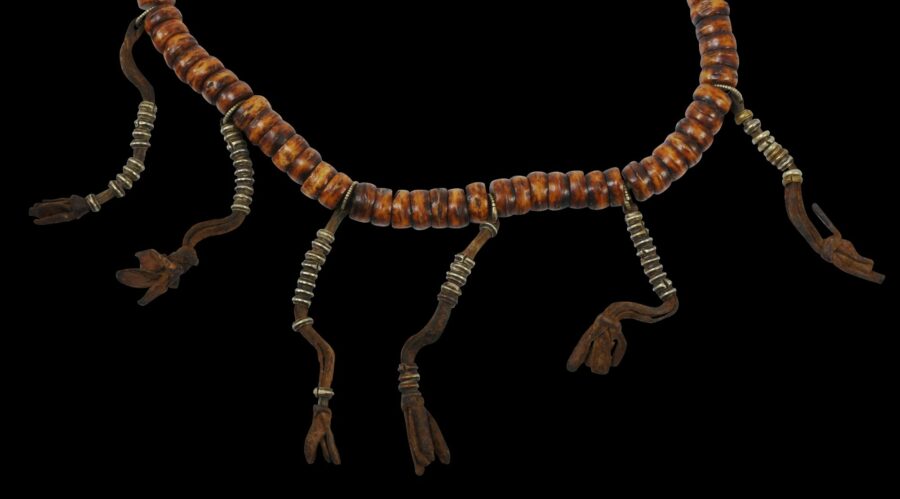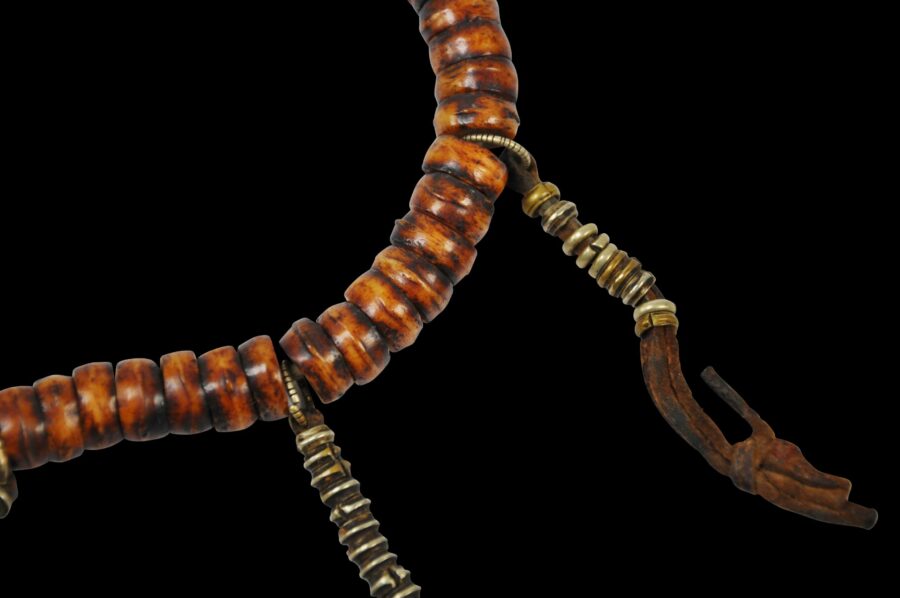This Buddhist rosary (sin-‘phen) is unusual. It is composed of human bone beads. Tibetan rosary beads composed of human bone are rare and are known as Mi Mgo’i Phreng Ba. They are used for wrathful-deity rituals (Henss, 2020, p. 152.)
The example here has superb patina from age and wear. It also includes seven sets of silver counters.
The central marker bead has so much wear and patina that it is difficult to tell from what it is made, but probably it is a very worn and smoothed rudraksha seed, probably imported from India.
Buddhist rosaries evolved from ancient Hindu-Indian mala prayer beads. In Tibet, they were used by both laymen and monks. They are supposed to comprise 108 beads plus others as counters, although sectarian variants might have as many as 111 beads plus counters and as few as 100. The main prayer beads were used to count repetitions of prayers and the counters were used to record multiples of the main beads, so that thousands of repetitions could be counted. Users typically held them in their left hands whilst chanting.
The set here is in a fine, stable condition.
It has come from an old, private London collection acquired over decades.
References
Daalder, T., Ethnic Jewellery and Adornment: Australia, Oceania, Asia, Africa, Ethnic Art Press/Macmillan, 2009.
Henss, M., Buddhist Ritual Art of Tibet: A Handbook on Ceremonial Objects and Ritual Furnishings in the Tibetan Temple, Arnoldsche, 2020.
Reynolds, V., Tibet: A Lost World: The Newark Museum Collection of Tibetan Art and Ethnology, The American Federation of Arts, 1978.
Sherr Dubin, L., The Worldwide History of Beads, Thames & Hudson, 2009.


